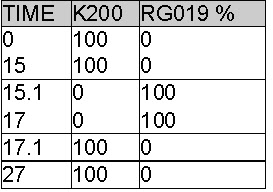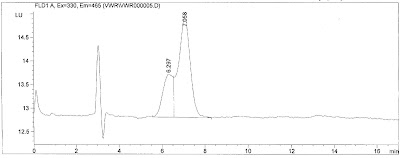Reminder: Please resubmit your answers to last quarter’s Amino Acid Chromatography Quiz by June 1st to be eligible for a prize. You can find that quiz located on our Blog at Chromatography Quiz #2.
Chromatography Quiz #3
Identify the error made when running the Glyphosate chromatogram below and win a prize! Simply email your answer and your full contact information to Rebecca at rlsmith@pickeringlabs.com by July 1st in order to win. You will receive email confirmation when your submission is received, and the troubleshooting answer and winner congratulations will be published in the next issue (to be anonymous, please notify Rebecca in submission).
Glyphosate Analysis for US EPA Method 547
Normal Operating Conditions: (for reference only, changes may be reflected in chromatogram)
Customer’s Glyphosate Standard: 25 ppb, 100 µL injection
Pickering Column: 1954150 Cation-exchange Column for Glyphosate Analysis, 4 x 150 mm
Column Temperature: 55 °C
Flow rate: 0.4 mL/min
Eluent Gradient:

Post-column conditions for pesticide analysis:
Reagent 1: Oxidizing reagent – 100uL of 5% Sodium Hypochlorite in 950mL of GA116
Reagent 2: 100 mg of OPA, 2 g Thiofluor™ in 950 mL of GA104
Reactor 1: 36 °C, 0.5 mL
Reactor 2: ambient. 0.1 mL
Reagent flow rates: 0.3 mL/min
Detection: Fluorometer ex 330 nm, em 465 nm


 They’ve each won, and will shortly be receiving from
They’ve each won, and will shortly be receiving from 

